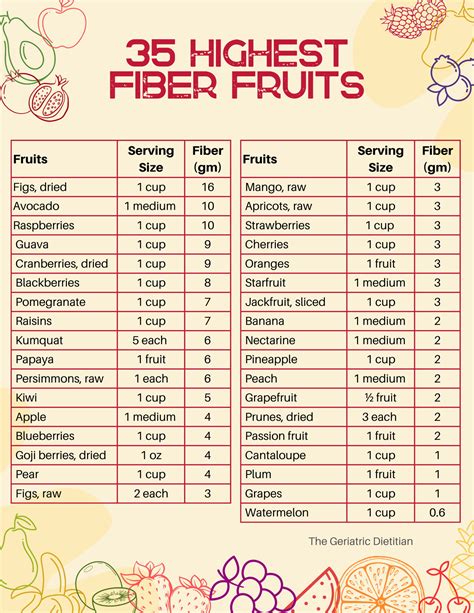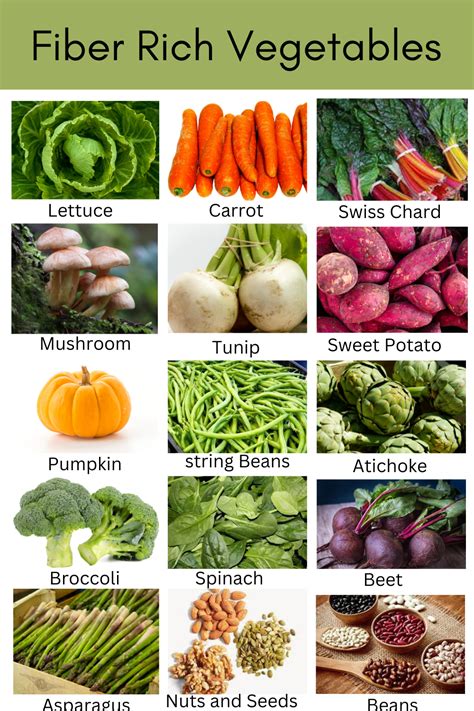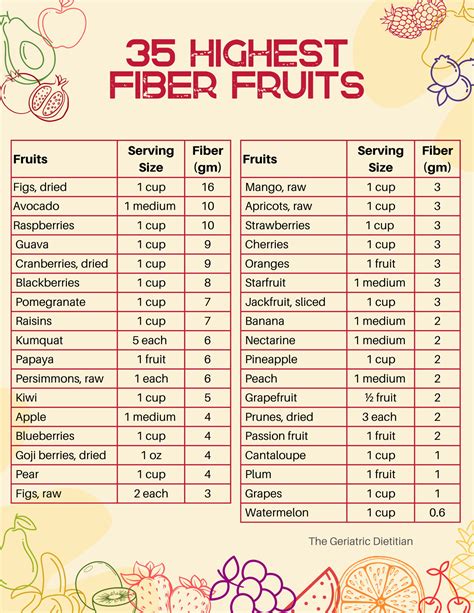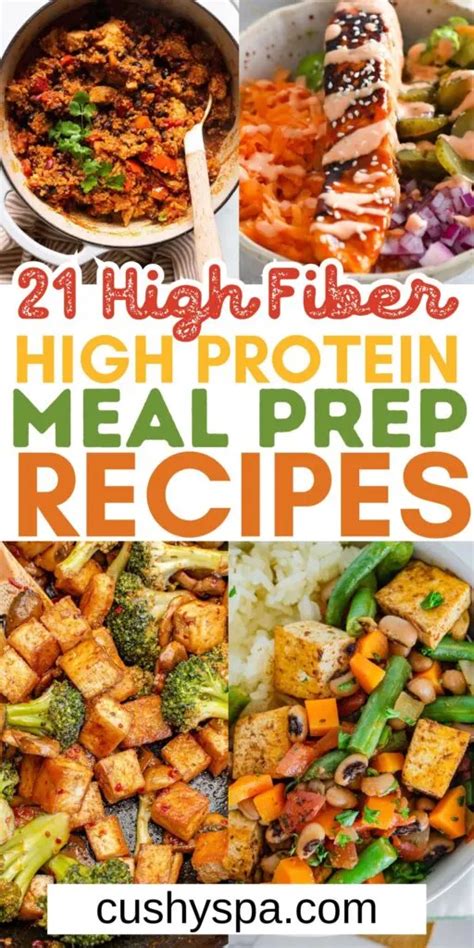Intro
Boost health with high fiber fruits and vegetables, including leafy greens, legumes, and citrus, to support digestion, weight management, and healthy blood sugar levels, naturally rich in nutrients and antioxidants.
The importance of a high-fiber diet cannot be overstated, and incorporating high-fiber fruits and vegetables into our daily meals is a great way to boost our overall health and wellbeing. A diet rich in fiber can help lower cholesterol levels, promote digestive health, and even aid in weight management. With the numerous benefits of a high-fiber diet, it's no wonder that health experts and nutritionists recommend consuming a variety of fiber-rich foods. In this article, we'll delve into the world of high-fiber fruits and vegetables, exploring their benefits, nutritional values, and ways to incorporate them into our diets.
A high-fiber diet is essential for maintaining a healthy digestive system, preventing chronic diseases, and supporting healthy blood sugar levels. The daily recommended intake of fiber is 25-30 grams, but most people consume significantly less than this amount. This is where high-fiber fruits and vegetables come into play, providing an excellent source of dietary fiber. From apples and bananas to broccoli and carrots, there are numerous high-fiber options to choose from. By understanding the benefits and nutritional values of these foods, we can make informed decisions about our diets and take the first step towards a healthier lifestyle.
The benefits of a high-fiber diet are numerous, and incorporating high-fiber fruits and vegetables into our meals can have a significant impact on our overall health. High-fiber foods can help regulate bowel movements, prevent constipation, and support healthy gut bacteria. A high-fiber diet has also been linked to a reduced risk of chronic diseases, such as heart disease, type 2 diabetes, and certain types of cancer. With the numerous benefits of high-fiber fruits and vegetables, it's essential to explore the different options available and learn how to incorporate them into our diets.
High-Fiber Fruits

Top High-Fiber Fruits
Some of the top high-fiber fruits include: * Apples (1 medium: 4.5 grams of fiber) * Bananas (1 medium: 3.5 grams of fiber) * Berries (1 cup: 3-4 grams of fiber) * Citrus fruits (1 medium: 2-3 grams of fiber) * Avocados (1 medium: 10 grams of fiber)High-Fiber Vegetables

Top High-Fiber Vegetables
Some of the top high-fiber vegetables include: * Broccoli (1 cup: 5 grams of fiber) * Carrots (1 cup: 3-4 grams of fiber) * Brussels sprouts (1 cup: 5 grams of fiber) * Sweet potatoes (1 medium: 4 grams of fiber) * Peas (1 cup: 9 grams of fiber)Benefits of High-Fiber Fruits and Vegetables

How to Incorporate High-Fiber Fruits and Vegetables into Your Diet
Incorporating high-fiber fruits and vegetables into our diets is easier than we think. Here are some tips to get you started: * Start your day with a high-fiber breakfast, such as oatmeal with fruit or whole-grain toast with avocado * Snack on high-fiber fruits and vegetables, such as apples or carrots * Add high-fiber vegetables to your meals, such as broccoli or Brussels sprouts * Try new high-fiber fruits and vegetables, such as pears or sweet potatoesHigh-Fiber Meal Ideas

High-Fiber Shopping List
Here is a high-fiber shopping list to help you get started: * Fresh fruits: apples, bananas, berries, citrus fruits * Fresh vegetables: broccoli, carrots, Brussels sprouts, sweet potatoes * Whole grains: brown rice, quinoa, whole-grain bread, whole-grain pasta * Nuts and seeds: almonds, chia seeds, flaxseeds, pumpkin seedsConclusion and Next Steps

What are the benefits of a high-fiber diet?
+A high-fiber diet can help lower cholesterol levels, promote digestive health, and even aid in weight management.
How much fiber should I consume daily?
+The daily recommended intake of fiber is 25-30 grams, but most people consume significantly less than this amount.
What are some high-fiber fruits and vegetables?
+Some high-fiber fruits and vegetables include apples, bananas, broccoli, carrots, and sweet potatoes.
We hope this article has provided you with a comprehensive guide to high-fiber fruits and vegetables. If you have any questions or comments, please don't hesitate to reach out. Share this article with your friends and family to help them learn about the benefits of a high-fiber diet. Take the first step towards a healthier lifestyle today!
